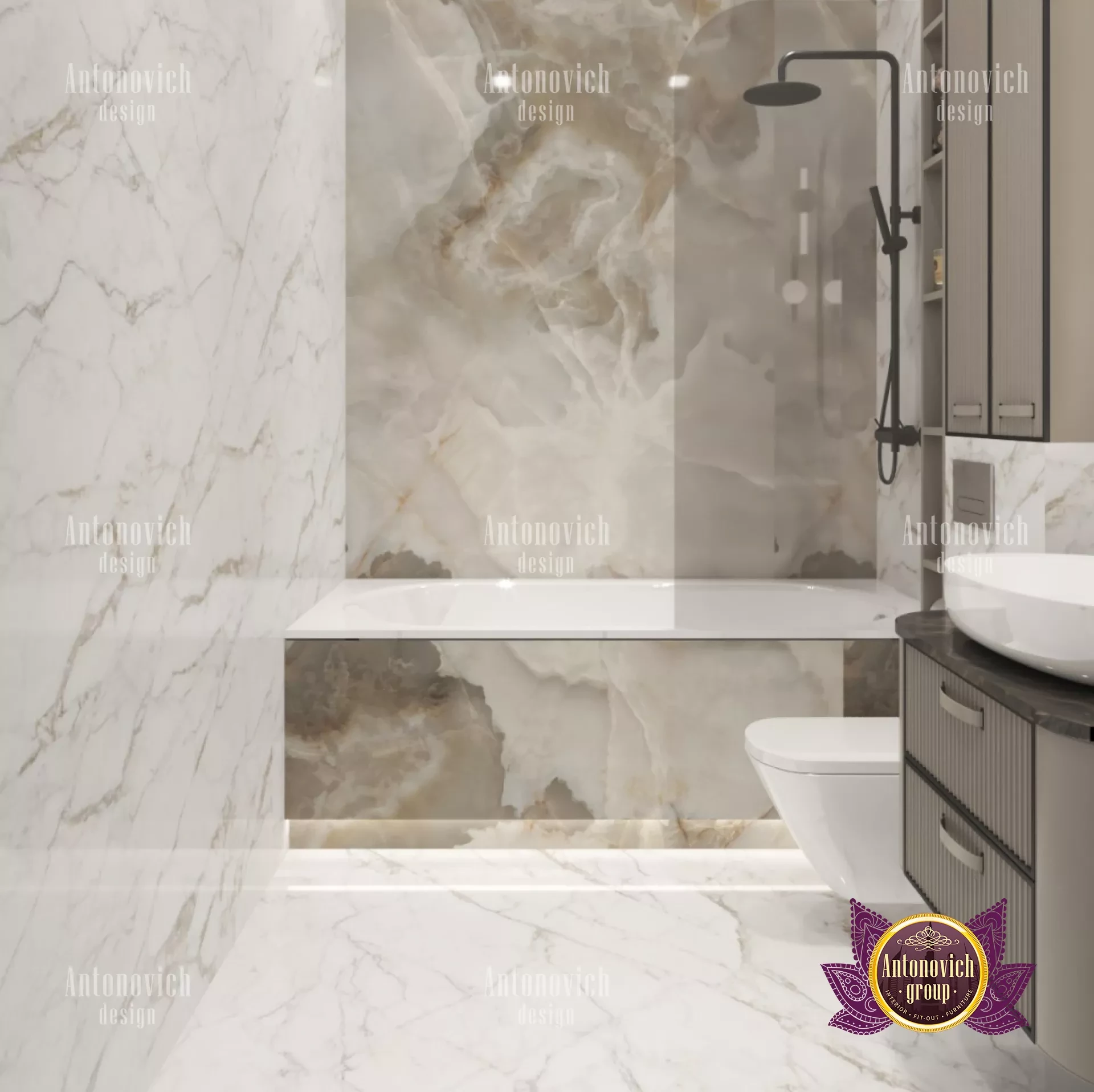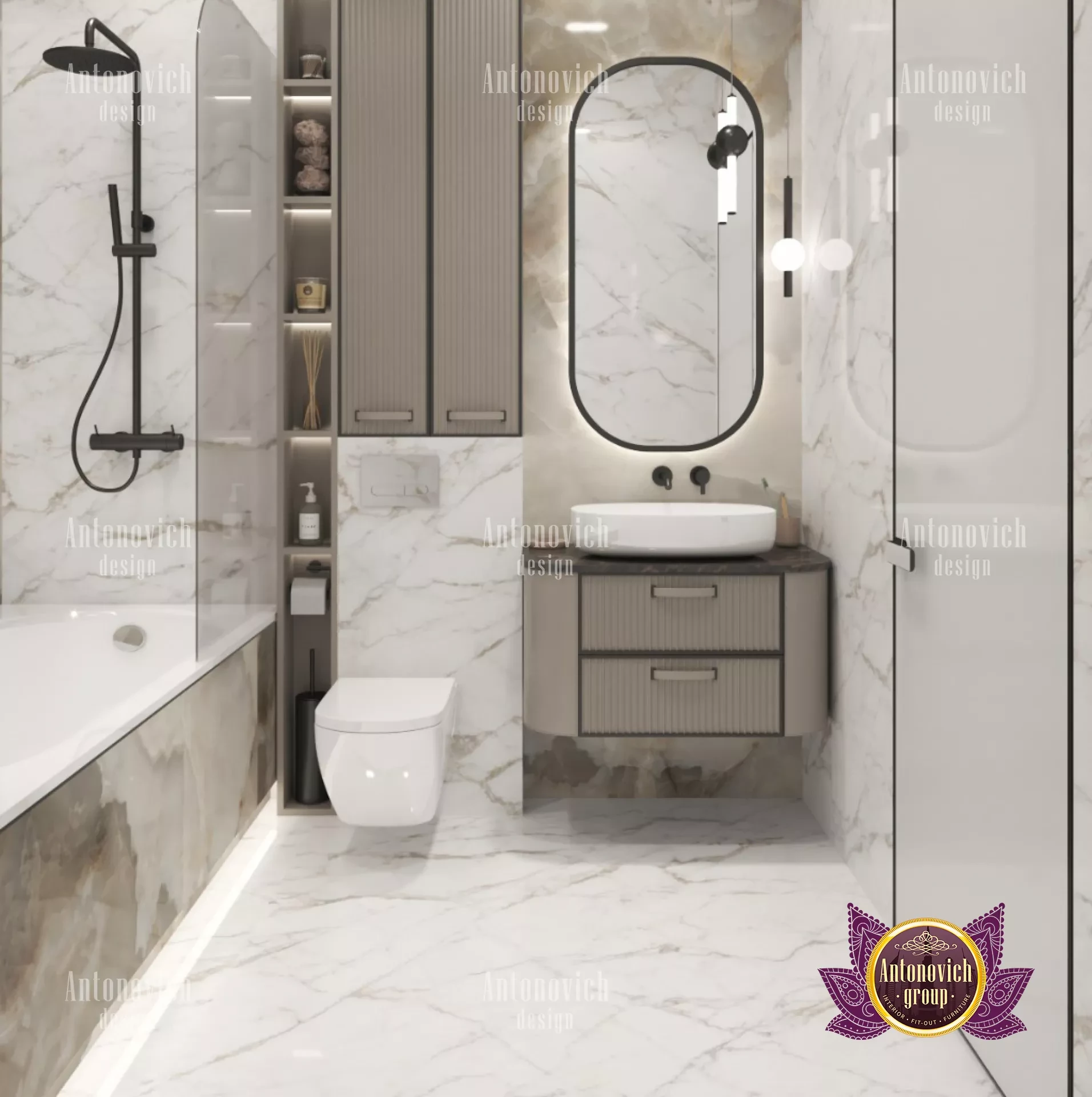MODERN AMERICAN BATHROOM INTERIOR
Any American home would benefit greatly from having modern, stylish bathrooms. With their sharp angles, flowing curves, geometric patterns, and clean lines, they demonstrate a cutting-edge design approach. They are becoming more and more common as people reject traditional architecture. Current design differs from modern design in a number of ways. Although it is widely acknowledged that modern design first appeared in the 1920s and 1930s, its full development took place in the post-World War II era, when midcentury modern design first began to emerge and gain popularity in the Nordic countries of Europe. Even if it may contain some of the ideas and trends of modern design, the current design does not belong to any certain historical time or design era. Instead, a design can be termed contemporary if it uses current, "of the moment," materials, trends, or furnishings. Because of this, even though current bathroom designs don't quite follow the aesthetic influences of that fabled post-war age, they are usually wrongly referred to as "modern." Since it is frequently sleek, minimalistic, and unadorned, modern bathroom design USA is typically thought to be particularly well-suited for smaller bathrooms. While this is true, because the contemporary design is so adaptable, it can be used in almost any bathroom design. Crisp angles and clean lines of the modern style can be very useful in small spaces, but they can also work in larger ones.

For instance, an angular double sink and cabinet combination might suit a larger bathroom while still being fashionable, useful, and modern. Smaller modern bathrooms in the USA could benefit greatly from the inclusion of a straightforward pedestal sink. This type is currently available in a variety of materials, including glass, stainless steel, and even copper, which can function reasonably well in a contemporary design. This space-saving layout is ideal for any bathroom that wants to maximize both functionality and beauty. Modern bathroom designs use a wide range of materials, but one element is always present: most modern bathrooms include at least some recently available materials. Therefore, even though more traditional designs might include vintage components like wood, stone, and porcelain, modern bathrooms frequently use modern materials like laminates and plastics. While natural or more traditional materials can still be used, contemporary bathrooms are much better suited to incorporating artificial or "modern" elements than their historical counterparts due to the way they are currently designed.

Bathroom designs that are attractive, slick, and minimalist are fashionable today. Consider precise, high-quality geometric shapes with muted colors and clean lines. Modern bathroom design may transform your bathroom, no matter how big or small, into a wonderful retreat. Since you use your bathroom every day, it should represent your own style. A contemporary bathroom can be the best option for you if you want clean, uncluttered interiors and smart design. If you have the space, consider incorporating this classic fixture. Modern bathrooms must have a freestanding bathtub. A freestanding tub, like a piece of art, establishes a striking focal point for the space with a contemporary, artistic design. A corner or a circle are only two of the many shapes that contemporary bathtubs can take. Clear lines and smooth, thin edges are the most crucial design components to take into account. For a more modern look, stay away from pedestals, clawfoot tubs, and elaborate curves and embellishments. To provide a useful option for performing bathroom tasks like shaving or applying makeup, bathroom mirrors and lights must work well together. Mirrors with straight lines and geometric lighting fixtures belong in a modern bathroom.












